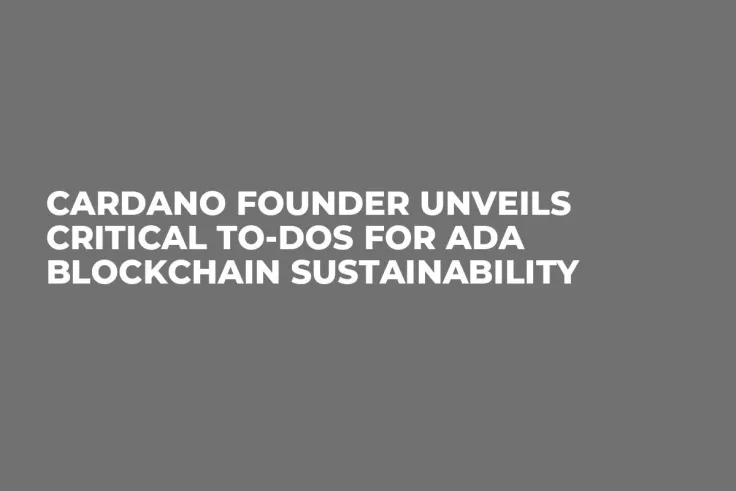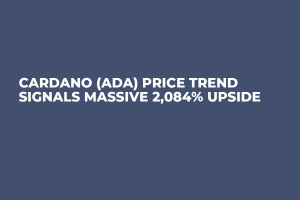
Disclaimer: The opinions expressed by our writers are their own and do not represent the views of U.Today. The financial and market information provided on U.Today is intended for informational purposes only. U.Today is not liable for any financial losses incurred while trading cryptocurrencies. Conduct your own research by contacting financial experts before making any investment decisions. We believe that all content is accurate as of the date of publication, but certain offers mentioned may no longer be available.
The Cardano blockchain, one of the biggest cryptocurrencies by market capitalization, faces a new challenge as staking rewards drop below 3%. According to the Staking Rewards site, the current reward rate for ADA staking is 2.97%.
In response to recent concerns, Cardano's founder, Charles Hoskinson, has highlighted a series of critical actions to ensure the long-term sustainability of the Cardano blockchain.
Hoskinson responded to a discussion on X in which Patrick Tobler, the CEO and founder of NMKR, suggested that a massive increase in transactions on Cardano might be necessary to keep the chain sustainable, given the drop in the staking rewards rate. Tobler further suggested a way forward, in which transaction fees would replace the staking rewards from the treasury.
Responding to the observations made, Hoskinson indicated that partner chains, increased transaction volume and ADA value appreciation might rebalance profitability for stake pool operators.
Tobler, not convinced by Cardano founder's pitch, indicated that in the current absence of partner chains, and the transaction fees insufficient to cover stake pool rewards, scalability and user adoption might be needed to make running a stake pool financially viable long-term.
Hoskinson concurred, saying, "It's axiomatic. Of course, all cryptocurrencies need more transactions. That's the purpose of a blockchain."
In light of this, the Cardano founder outlined vital steps to take in this scenario, which include getting decentralization governance running, the treasury operational and partner chains running.
ADA staking rewards
Staking is a fundamental aspect of the proof-of-stake mechanism that Cardano employs. It enables ADA holders to engage in network validation while earning rewards.
Native staking rewards for ADA are composed of block rewards and transaction fees. For each epoch, a fixed 0.22% of the reserve balance is used for block rewards and the treasury.
As regards transaction fees, the set of transactions in a block that was minted during a specific epoch is used to determine the distribution of fee rewards. A total of 20% of these rewards go to the treasury, while the remaining 80% is distributed to stake pools. In the long run, the idea is to rely only on transaction fees as the source of rewards.


 Dan Burgin
Dan Burgin Vladislav Sopov
Vladislav Sopov U.Today Editorial Team
U.Today Editorial Team